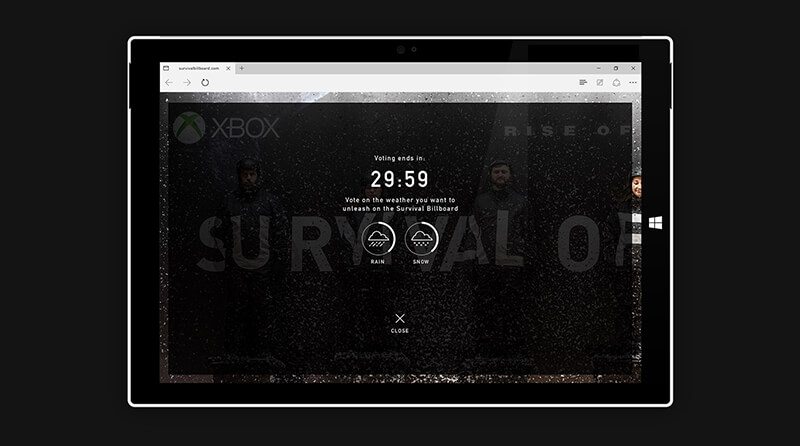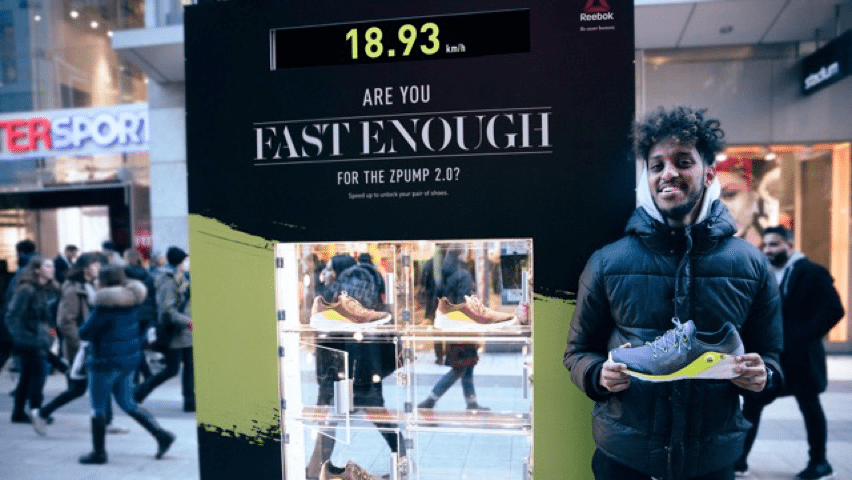Aptly named, out-of-home (“OOH”) advertising targets consumers when away from home—driving, walking, on mass transit, etc. Originally a static medium considered mainly as support for TV and radio campaigns, OOH today is a far more advanced and interactive experience. In fact, while traditional ad spend is projected to decrease by 3.8%, OOH and cinema spend is actually forecasted to increase by 2.9% in 2018. Companies’ nontraditional outdoor tactics are pushing the envelope, and we’ve seen OOH advertising go from an unmeasurable marketing tool to a calculated vessel for human engagement.
Xbox brought new life, literally, to billboards with their London OOH campaign launching Rise of the Tomb Raider. Eight gamers put their “grit” to the test for 24 hours on a billboard. Sounds easy? Not when the target audience, recruited through social media, print and radio, were encouraged to log on and vote for the “natural” elements our billboard sitters had to endure. From wind to rain to snow, the contestants’ mental toughness was live-streamed in front of millions. The stunt produced 3.5 million views in 22 hours, 32,000 social media comments in one day, and generated 8 minutes of billboard dwell time, compared to the 8 second traditional billboard average. The work won 17 Lions, five of which were gold, at the 2016 Cannes Festival—one of the most-awarded campaigns that year.

While Xbox elevated, Reebok owned the streets. In 2016, Reebok took a traditional street sign in Stockholm and incorporated both beacon technology and built-in speed cameras to challenge people to a human speed test. If a passerby could run past the sign faster than 10.5 mph, they unlocked a free pair of Reebok’s newest sneakers. The disruptive campaign directly engaged consumers, encouraging their involvement with the advertisement and positive word-of-mouth.

Discovery Channel used OOH advertisements to reach New York City residents with a cause-related campaign for Racing Extinction, a 2015 documentary bringing attention to the global issues facing our planet. Using a state of the art projector system, Discovery pushed out images and audio of endangered species on some of the most well-known buildings in New York, making it near impossible for people to miss their messaging.
Whether brands are pushing product or awareness, out-of-home campaigns are becoming more measureable, interactive, and consumer-focused. These efforts, combined with cutting-edge technological advancements, are paving the way for more industry-disrupting, engaging campaigns. Is your company prepared to compel, convert, close and attract every step of the way?






